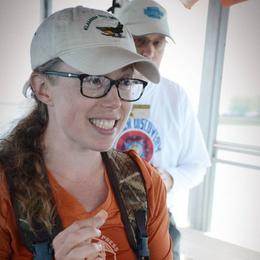Discover your next favorite birding hotspot! These special off-the-beaten path places aren't frequently visited by bird watchers, despite being open to the public and offering a wide range of recreational opportunities. Learn what makes these areas important for birds and people, where they are located, and what birds you can expect to find, so you can start planning your visit to a Wetland Wonder this spring.
Michigan's Wetland Wonders are the premier Managed Waterfowl Hunt Areas (MWHAs) in the state. These areas were created to provide exceptional waterfowl hunting opportunities, and are managed to provide waterfowl habitat for nesting and migration and for the benefit of other wetland wildlife. Since the beginning, the areas have been funded by hunting license fees and area use fees, but they are open for anyone to visit, use and enjoy most of the year. All of Michigan’s Wetland Wonders double as Audubon Important Bird Areas (IBAs).
MI Birds, a program of Audubon Great Lakes and Michigan Department of Natural Resources, shared information about Michigan's Wetland Wonders.
Fennville Farm Unit at Allegan State Game Area
Allegan SGA is a globally recognized Important Bird Area (IBA) known for it’s large number of vulnerable or management concern species, such as Henslow’s Sparrow, Prothonotary Warbler, and Red-shouldered Hawk. It is also supports regional source populations for area-sensitive neotropical migrants, like Blue-winged Warbler and Golden-winged Warblers, and high concentrations of Canada Goose and Mallard in winter. There are over 140 species documented during breeding bird surveys, and over 240 species documented year-round on eBird.
Fish Point State Wildlife Area
Important breeding area for Caspian and Common Terns, Ring-billed Gull, Great Egret, and Black-crowned Night Heron and a great spot to view raptor migration in the spring. This State Wildlife Area also hosts several Snowy Owls each winter. In addition to wildlife viewing and birding, this area offers opportunities for hiking, fishing, nature trail hiking, and canoeing and kayaking and is part of the Saginaw Bay Birding Trail.
Harsens Island at St. Clair Flats State Wildlife Area
Harsens Island is within the largest freshwater delta in the world, composed of approximately 25,000 acres of cattail, bulrush, and grasses with open channels. This state recognized IBA is highly important for breeding, migrating and wintering waterfowl and supports very high densities of rare marsh-nesting species, including the Black Tern. Other rare marsh nesting species include: American and Least Bitterns, Forster’s Terns, Marsh Wren, King Rail, Virginia Rail, Sora, Purple Martin and Common Gallinule. This site is part of the St. Clair-Macomb Birding Trail and Blueways of St. Clair Water Trail.
Muskegon County Resource Recovery Center
This state recognized IBA includes 11,000 acres of aeration, settling and spraying areas, including lagoons, dikes and fields. Adjacent to Muskegon State Game Area, another state-recognized IBA, it supports a large diversity and abundance of migrating waterfowl and shorebirds, particularly Semipalmated Sandpipers. High densities of Ruddy Ducks and Northern Shovelers can be observed during migration. In Spring and Summer, the grassfields south of Apple Avenue are excellent for Upland Sandpiper, Short-eared Owl, sparrows and hawks. A visitor pass is required to tour the area.
Nayanquing Point State Wildlife Area
This state recognized IBA, falls within the larger globally recognized Saginaw Bay IBA and is part of the Saginaw Bay Birding Trail. Wigwam Bay State Wildlife Area, another state-recognized IBA, is 30 minutes north. Nayanquing offers a viewing platform at the end of Kitchen Road that is wheelchair accessible and allows views of coastal marsh, managed marsh and agricultural cropland. High concentrations of more than one species can be observed during migration and over winter: Tundra Swans (500+), Greater Scaup (5,000+), diving duck sp. (20,000+) during spring and fall migrations. This is a great spot for Winter and Spring Snowy Owl viewing.
Point Mouillee State Game Area
This premier Michigan wetland is of key significance to waterbirds, waterfowl and shorebirds. Tundra Swans (1000+), Redheads (5,000+), Wood Ducks (400), Canvasbacks (11,000), Lesser Yellowlegs (1,400), and Short-billed Dowitchers (671)are just a few of the species you can encounter in high densities during migration. One of the Great Lakes’ top shorebird stopovers, this huge wetland complex is at the mouth of the Huron River bordering Lake Erie and is one of the largest freshwater marsh restoration projects in the world. This spot hosts an Annual Waterfowl Festival each fall and is a field trip location for America’s Biggest Week in Birding and Detroit Audubon.
Shiawassee River State Game Area
This state-recognized IBA, adjoins Shiawassee Wildlife Refuge with 9,000 acres of wetlands, wetland impoundments, and floodplain deciduous forest. This area supports a diversity of waterbirds, waterfowl and vulnerable marsh birds. Exceptional wildlife viewing opportunities from the dike system and roadways. In addition to wildlife viewing and birding, this area offers fishing, canoeing and kayaking, nature trail hiking, biking and jogging opportunities.




